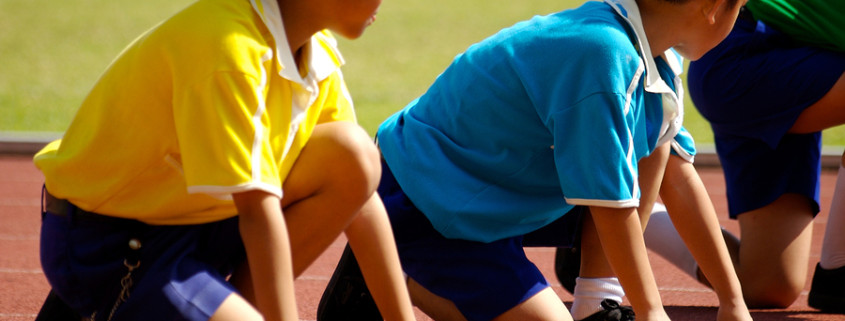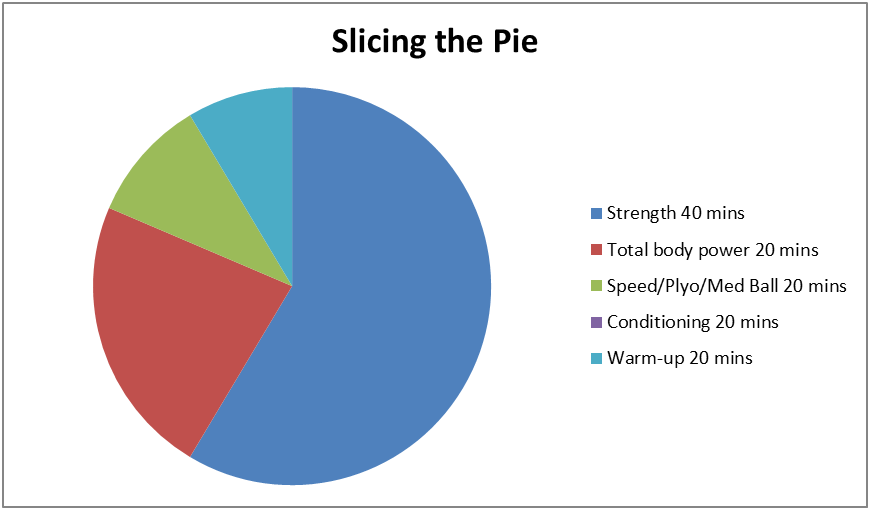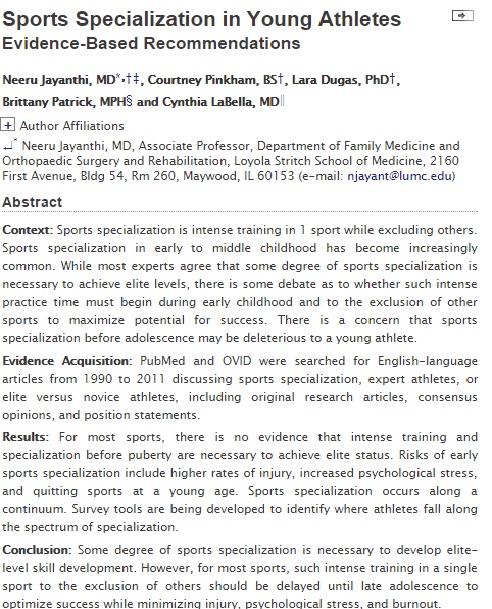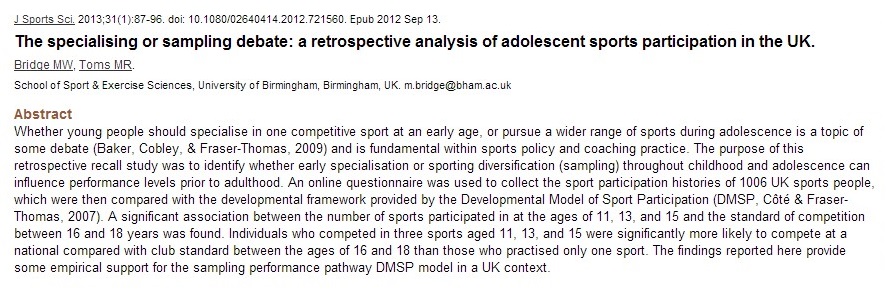I recently received a nice email from one of the coaches I taught on the 1st4sport Level 2 Certificate in Strength & Conditioning so I thought I would answer it as a blog post. His questions are all about programming for junior athletes.
1. I still have a few issues on creating a valid program for someone who trains everyday (couple of hours/day). If you have any suggestion, I would be happy to hear them.
I also have another issue, I am training the girls to have them ready for their Hockey, Netball and tennis season. The issues I have are:
2. It’s often the same girls in each sport (meaning only a few of them are in netball and not in tennis and/or hockey) so there is no rest for them other than school holidays. I found that a lot of them are burnt out by May, June
3. The school does Hockey S&C when the hockey season starts (in September just after the summer holiday, the girls are not physically ready after the holiday yet they start straight away playing matches) then S&C for netball when the netball season starts and S&C tennis when tennis starts. Do you think I should prepare them before, allowing them to be ready rather than trying to do injury prevention all the time?
So there are really three questions here and all of them could be a Blog post in their own right. Let’s start with the first one.
How do you create a valid program for someone who trains everyday (couple of hours/day)?
The first question is open ended but I can ascertain from the context of his follow up questions that we are talking about ‘sport scholars,’ the gifted and talented group of teenagers that usually get picked to play in multiple sports. They usually have at least one sport going on each day and will typically be asked to compete at the weekend for their school, club or maybe even county/region or country!
On the plus side they are ‘training’ every day, so this means you might not be restricted to just one or two training sessions in a week like you might have with an amateur football club for example. They are also playing multiple sports- which is a good thing, and we’ll talk about that later.
But it depends on what you mean by ‘training.’ Are we talking about practising their sport 2 hours per day or are we talking about time set aside for physical training, or a combination of both?
As I don’t know the answer to this I am going to assume for the purposes of this discussion that we mean sports practice for 2 hours every day. So then the next questions you have to ask yourself are:
a. How much total training is appropriate for my athlete per week?
b. How should you divide the total training for this age group- what is the right blend of sports practice and strength & conditioning work?
This comes down to how you slice the pie!
I have included a table below which is based on my interpretation of guidelines for Tennis players given to me by the Lawn Tennis Association (LTA) in 2013. I’ve put a column ‘old’ and ‘new’ for comparison. The old column represents the previous guidelines I had from the LTA.
Now I appreciate there is a lot of information in this Table. But to help us focus on the most important information, narrow your focus to the Tennis column and look at the recommended Tennis hours in the ‘new’ column for the age range 12 years up to 16 years (I have selected this age group as our sports scholars will almost certainly stay in education in some form during this period). At 12 years old we are talking about a range of 9-12 hours per week of Tennis. At 16 years old the range is 15-18 hours.
This is a critical period in a young athlete’s development. We need to ramp up the training load- no question- but there is a point of diminished returns where you can tip the scales towards over training and a one way ticket to the physio’s room.
What does the research say?
This research confirms for us a couple of principles of training for young athletes
1. Don’t specialise too soon– More highly specialised participation in sports [from an earlier age] may be a risk for development of injury for young athletes
2. Play other sports at a younger age– players who competed in three sports aged 11, 13 and 15 were significantly more likely to play National level compared with club standard between the ages of 16 and 18 than those who practised in only one sport.
So a ‘valid’ programme for me for a young athlete would respect the ratios in the Table above and not exceed the upper limits of Tennis training. Instead make sure the athlete is playing other sports and doing a healthy amount of Strength & Conditioning.
I ‘generally’ recommend doing a maximum of 16 hours Tennis per week until aged 16.
The problem of some tennis parents (and coaches) is that they have never read any Sports Science recommendations. My personal opinion is if a junior tennis player has talent, then 15 hours a week tennis training + fitness and tournaments is more than enough for his/her development. If a tennis player does not have enough talent to play on the pro level, why destroy the young athlete’s health with 30 hours of training a week?
What about the multi-sport athlete?
I am all for playing several sports but there does reach a point when an athlete who truly wants to excel in one sport needs to start to specialise. The 12-16 year old age range I previously spoke about is where I feel the balance needs to start to shift towards one main sport- training as much as 85% in that sport. So I would need to ascertain from the coach what age group of athletes he is coaching; if the girls are 8-11 years old (pre-puberty for argument sake) then being a multi-sport athlete strikes me as a good thing.
Regarding the coach’s questions 2 and 3 it seems like the girls are not playing all three sports at the same time. The sport changes with the time of year. For the recreational athlete, or even a sport scholar, I think this is a good thing in principle- provided they are a bit younger. If they are older and truly want to excel at one sport though, I wouldn’t be chopping and changing sports throughout the year.
As the coach says, the main downside of being involved in several sports however, is the potential to be able to practice all year round! You never get to switch off and you could burn out!
Normally you would expect the athlete to go through a periodised plan which includes work, rest and play!!! In an ideal scenario you would work hard in your training phase, then go out and compete and then have a rest. Most professional sports calendars have an off-season where athletes can spend a few weeks re-charging their batteries before they hit their training again.
If the girls are to get through the year unphased then there does need to be a planned rest period provided for the girls between the sports of Tennis, Netball and Hockey. This is something the S&C coach will need to educate the Director of Sport on and explain why the girls are in danger of getting injured if they don’t get some rest after the competition phase of one sport and the start of the next.
Should juniors get ready for their sport by training in the summer holidays?
The final point regarding question 3 is a good topic to discuss. If there is opportunity to practice/compete in a sport all year round when do you exactly prepare to play that sport?
In Tennis the pros have an off-season across late November to the start of January (around 6 weeks). Junior Tennis players are supposed to have an off-season of sorts in the summer holidays (around 5-6 weeks). However, given the need to stay in school during term-time this is actually the preferred time for juniors to get stuck into some uninterrupted competition.
My solution is to make September and January emphasise S&C for a few weeks of each of those months. I am not a fan of putting the rackets down and only doing physical training. However, what I will typically do is encourage the young athletes to do a few weeks of light training in early September, to give them time to rest after a summer of competing. Then we will go for it for 3-4 weeks of higher training loads biased towards S&C. We will do the same in January where we know they will have had a little bit lighter training over Christmas so we can build up to a few higher training loads in late January.
If the young athlete isn’t doing Tennis, cricket, or any other summer sport then absolutely plan for some S&C training to give you a head start to the year in September. Just remember to plan in cycles of WORK + REST + PLAY!!!!!!!!
Hope that helps!










